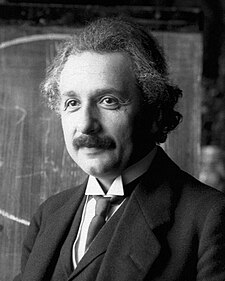Insurance, in law and economics, is a form of risk management primarily used to hedge against the risk of a contingent loss. Insurance is defined as the equitable transfer of the risk of a loss, from one entity to another, in exchange for a premium, and can be thought of as a guaranteed and known small loss to prevent a large, possibly devastating loss. An insurer is a company selling the insurance; an insured or policyholder is the person or entity buying the insurance. The insurance rate is a factor used to determine the amount to be charged for a certain amount of insurance coverage, called the premium. Risk management, the practice of appraising and controlling risk, has evolved as a discrete field of study and practice.
Reinsurance is a means by which an insurance company can protect itself with other insurance companies against the risk of losses. Individuals and corporations obtain insurance policies to provide protection for various risks (hurricanes, earthquakes, lawsuits, collisions, sickness and death, etc.). Reinsurers, in turn, provide insurance to insurance companies. The company requesting the cover is called the cedant and the reinsurer can be called the ceded, although the latter term is not in common use.

Legilimency is the act of magically navigating through the many layers of a person's mind and correctly interpreting one's findings. Laymen sometimes refer to Legilimency as "mind-reading", but practitioners disdain this term as naive. The opposite of Legilimency is Occlumency, which may be used to shield one's mind from the invasion and influence of a Legilimens.
--Severus Snape
mens - (Latin) mind
Legilimency, a branch of magic not normally taught at Hogwarts (at least, not at Ordinary Wizarding Level) is the ability to extract emotions and memories from another person's mind. Although the word literally translates as 'mind-reading', this is considered a naive interpretation of the art by its practitioners. Someone who practices Legilimency is known as a Legilimens.
Legilimency is easier when the spell-caster is physically near the target, and when the target is off-guard, relaxed, or otherwise vulnerable. Eye contact is often essential, so it is useful for a Legilimens to verbally manipulate his or her target into meeting the Legilimens' eyes, with the fringe benefit that the target's emotional state may bring relevant associated memories to the surface (OP24, OP26). All of this seems to tally quite nicely with what is known of the nature of human memory in Muggle science.
Albert Einstein ( 14 March 1879 – 18 April 1955) was a theoretical physicist. His many contributions to physics include the special and general theories of relativity, the founding of relativistic cosmology, the first post-Newtonian expansion, explaining the perihelion advance of Mercury, prediction of the deflection of light by gravity andgravitational lensing, the first fluctuation dissipation theorem which explained the Brownian movement of molecules, the photon theoryand wave-particle duality, the quantum theory of atomic motion in solids, the zero-point energy concept, the semiclassical version of theSchrödinger equation, and the quantum theory of a monatomic gas which predicted Bose-Einstein condensation. Einstein is best known for his theories of special relativity and general relativity. He received the 1921 Nobel Prize in Physics "for his services to Theoretical Physics, and especially for his discovery of the law of the photoelectric effect." Einstein published more than 300 scientific and over 150 non-scientific works. He is often regarded as the father of modern physics.
The Rubik's Cube is a 3-D mechanical puzzle invented in 1974 by Hungarian sculptor and professor of architecture Ernő Rubik. Originally called the "Magic Cube", the puzzle was licensed by Rubik to be sold by Ideal Toys in 1980and won the German Game of the Year special award for Best Puzzle that year. As of January 2009, 350 million cubes have sold worldwide making it the world's top-selling puzzle game It is widely considered to be the world's best-selling toy.
In a classic Rubik's Cube, each of the six faces is covered by 9 stickers, among six solid colours (traditionally white, red, blue, orange, green, and yellow). A pivot mechanism enables each face to turn independently, thus mixing up the colours. For the puzzle to be solved, each face must be a solid colour. Similar puzzles have now been produced with various numbers of stickers, not all of them by Rubik. The original 3×3×3 version celebrated its twenty-fifth anniversary in 2005.
Contributors
- isuru
- I am a Guy who really like to have Fun in my life.. ,Who likes to make lots of friends, who likes programming, Likes to Draw , Listen to Music.. and Do all kinds of Adventures things..
